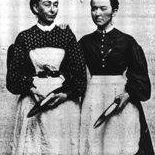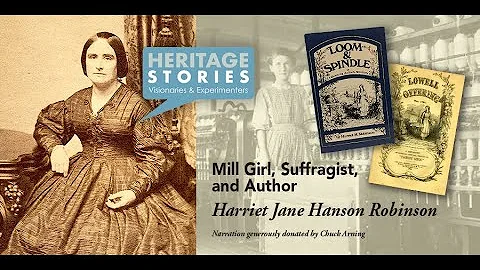Harriet J Robinson
age ~55
from Rex, GA
- Also known as:
-
- Harriet Joann Robinson
- Harriet T Robinson
- Harriet Joann Jones
- Harriet J Jones
- Harriett Robinson
- Harriett Jones
Harriet Robinson Phones & Addresses
- Rex, GA
- Riverdale, GA
- Pella, IA
- Oskaloosa, IA
- Milwaukee, WI
Resumes

Sr. V.p. R&D At Emory University
view sourcePosition:
Sr. V.P. R&D at Emory University
Location:
Greater Atlanta Area
Industry:
Higher Education
Work:
Emory University
Sr. V.P. R&D
Sr. V.P. R&D

Harriet Scottie Robinson
view source
Harriet Robinson
view source
Harriet Scottie Robinson
view source
Harriet Robinson
view source
Harriet Robinson
view sourceLawyers & Attorneys

Harriet Robinson - Lawyer
view sourceISLN:
902087093
Admitted:
1987
University:
University of Chicago, B.A., 1983
Law School:
Yale University, J.D., 1986
License Records
Harriet Enochs Robinson
License #:
C003434 - Active
Category:
Social Work
Issued Date:
Apr 16, 1999
Expiration Date:
Jun 30, 2017
Type:
Clinical Social Worker
Isbn (Books And Publications)


Us Patents
-
Dna Expression Vectors And Methods Of Use
view source -
US Patent:7795017, Sep 14, 2010
-
Filed:Dec 9, 2004
-
Appl. No.:11/009063
-
Inventors:Harriet L. Robinson - Atlanta GA, US
Rama R. Amara - Atlanta GA, US
Ted M. Ross - Aspinall PA, US
Rick A. Bright - Atlanta GA, US -
Assignee:Emory University - Atlanta GA
-
International Classification:C07H 21/04
C12N 15/63 -
US Classification:4353201, 536 231
-
Abstract:The present invention relates to novel plasmid constructs useful for the delivery of DNA vaccines. The present invention provides novel plasmids having a transcription cassette capable of directing the expression of a vaccine nucleic acid insert encoding immunogens derived from any pathogen, including fungi, bacteria and viruses. The present invention, however, is particularly useful for inducing in a patient an immune response against pathogenic viruses such as HIV, measles or influenza. Immunodeficiency virus vaccine inserts of the present invention express non-infectious HIV virus-like particles (VLP) bearing multiple viral epitopes. VLPs allow presentation of the epitopes to multiple histocompatability types, thereby reducing the possibility of the targeted virus escaping the immune response. Also described are methods for immunizing a patient by delivery of a novel plasmid of the present invention to the patient for expression of the vaccine insert therein. Optionally, the immunization protocol may include a booster vaccination that may be a live vector vaccine such as a recombinant pox virus or modified vaccinia Arbora vector.
-
Immunization By Inoculation Of Dna Transcription Unit
view source -
US Patent:7850956, Dec 14, 2010
-
Filed:Jan 22, 2004
-
Appl. No.:10/763049
-
Inventors:Harriet L. Robinson - Atlanta GA, US
Ellen F. Fynan - Sterling MA, US
Robert G. Webster - Memphis TN, US
Shan Lu - Franklin MA, US -
Assignee:University of Massachusetts Medical Center - Worcester MA
St. Jude Children's Research Hospital - Memphis TN -
International Classification:A61K 48/00
A61K 39/12 -
US Classification:424 932, 514 44, 4241861
-
Abstract:This invention relates to a method of immunizing a vertebrate, comprising introducing into the vertebrate a DNA transcription unit which comprises DNA encoding a desired antigen or antigens. The uptake of the DNA transcription unit by a host vertebrate results in the expression of the desired antigen or antigens, thereby eliciting humoral or cell-mediated immune responses or both humoral and cell-mediated responses. The elicited humoral and cell-mediated immune response can provide protection against infection by pathogenic agents, provide an anti-tumor response, or provide contraception. The host can be any vertebrate, avian or mammal, including humans.
-
Compositions And Methods For Generating An Immune Response
view source -
US Patent:8623379, Jan 7, 2014
-
Filed:Jan 3, 2003
-
Appl. No.:10/336566
-
Inventors:Harriet L. Robinson - Atlanta GA, US
James Smith - Decatur GA, US
Jian Hua - Dunwoody GA, US -
Assignee:Emory University - Atlanta GA
-
International Classification:C12Q 1/70
C12N 15/63
C12N 15/33
C12N 15/48
C12N 15/49
A61K 39/21 -
US Classification:4241991, 4242041, 4242081, 4242321, 4353201
-
Abstract:We have developed DNA and viral vectors that can be used, alone or in combination, as a vaccine against one HIV clade, subtype, or recombinant form of HIV or against multiple HIV clades, subtypes, or recombinant forms. Moreover, the vectors can encode a variety of antigens, which may be obtained from one clade or from two or more different clades, and the antigens selected and/or the manner in which the vectors are formulated (e. g. , mixed) can be manipulated to generate a protective immune response against a variety of clades (e. g. , the clades to which a patient is most likely to be exposed; with the proportions of the components of the vaccine tailored to the extent of the patient's risk to a particular clade or clades).
-
Dna Expression Vectors And Methods Of Use
view source -
US Patent:20020106798, Aug 8, 2002
-
Filed:Mar 2, 2001
-
Appl. No.:09/798675
-
Inventors:Harriet Robinson - Atlanta GA, US
James Smith - Tucker GA, US
Ted Ross - Winterville NC, US
Rick Bright - Atlanta GA, US
Jian Hua - Decatur GA, US
Dennis Ellenberger - Norcross GA, US
Donald Hildebrand - Athens GA, US -
International Classification:C12N015/86
C12N007/00 -
US Classification:435/456000, 435/320100, 435/235100
-
Abstract:The present invention relates to novel plasmid constructs useful for the delivery of DNA vaccines. The present invention provides novel plasmids having a transcription cassette capable of directing the expression of a vaccine nucleic acid insert encoding immunogens derived from any pathogen, including fungi, bacteria and viruses. The present invention, however, is particularly useful for inducing in a patient an immune response against pathogenic viruses such as HIV, measles or influenza. Immunodeficiency virus vaccine inserts of the present invention express non-infectious HIV virus-like particles (VLP) bearing multiple viral epitopes. VLPs allow presentation of the epitopes to multiple histocompatability types, thereby reducing the possibility of the targeted virus escaping the immune response. Also described are methods for immunizing a patient by delivery of a novel plasmid of the present invention to the patient for expression of the vaccine insert therein. Optionally, the immunization protocol may include a booster vaccination that may be a live vector vaccine such as a recombinant pox virus or modified vaccinia Arbora vector. The booster live vaccine vector includes a transcription cassette expressing the same vaccine insert as the primary immunizing vector.
-
Compositions And Methods For Generating An Immune Response
view source -
US Patent:20040105871, Jun 3, 2004
-
Filed:Mar 8, 2002
-
Appl. No.:10/093953
-
Inventors:Harriet Robinson - Atlanta GA, US
James Smith - Decatur GA, US
Jian Hua - Dunwoody GA, US -
International Classification:A61K039/12
C12N007/00
C12N015/863 -
US Classification:424/199100, 435/235100, 435/456000
-
Abstract:The present invention relates to novel plasmid constructs useful for the delivery of DNA vaccines. The present invention provides novel plasmids having a transcription cassette capable of directing the expression of a vaccine nucleic acid insert encoding immunogens derived from any pathogen, including fungi, bacteria and viruses. The present invention, however, is particularly useful for inducing in a patient an immune response against pathogenic viruses such as HIV, measles or influenza. Immunodeficiency virus vaccine inserts of the present invention express non-infectious HIV virus-like particles (VLP) bearing multiple viral epitopes. VLPs allow presentation of the epitopes to multiple histocompatability types, thereby reducing the possibility of the targeted virus escaping the immune response. Also described are methods for immunizing a patient by delivery of a novel plasmid of the present invention to the patient for expression of the vaccine insert therein. Optionally, the immunization protocol may include a booster vaccination that may be a live vector vaccine such as a recombinant pox virus or modified vaccinia Arbora vector. The booster live vaccine vector includes a transcription cassette expressing the same vaccine insert as the primary immunizing vector.
-
Compositions And Methods For Generating An Immune Response
view source -
US Patent:20070048861, Mar 1, 2007
-
Filed:Jan 17, 2006
-
Appl. No.:11/333770
-
Inventors:Harriet Robinson - Atlanta GA, US
James Smith - Cumming GA, US
Jian Hua - Dunwoody GA, US
Bernard Moss - Bethesda MA, US
Rama Amara - Atlanta GA, US
Linda Wyatt - Rockville MD, US
Patricia Earl - Chevy Chase MA, US
Ted Ross - Aspinall PA, US
Rick Bright - Washington DC, US
Salvatore Butera - Atlanta GA, US
Dennis Ellenberger - Norcross GA, US
Thomas Folks - Snellville GA, US -
International Classification:C12P 21/06
C12N 15/00 -
US Classification:435320100, 435069100
-
Abstract:The present invention relates to novel plasmid constructs useful for the delivery of DNA vaccines. The present invention provides novel plasmids having a transcription cassette capable of directing the expression of a vaccine nucleic acid insert encoding immunogens derived from any pathogen, including fungi, bacteria and viruses. The present invention, however, is particularly useful for inducing in a patient an immune response against pathogenic viruses such as HIV, measles or influenza. Immunodeficiency virus vaccine inserts of the present invention express non-infectious HIV virus-like particles (VLP) bearing multiple viral epitopes. VLPs allow presentation of the epitopes to multiple histocompatability types, thereby reducing the possibility of the targeted virus escaping the immune response. Also described are methods for immunizing a patient by delivery of a novel plasmid of the present invention to the patient for expression of the vaccine insert therein. Optionally, the immunization protocol may include a booster vaccination that may be a live vector vaccine such as a recombinant pox virus or modified vaccinia Arbora vector. The booster live vaccine vector includes a transcription cassette expressing the same vaccine insert as the primary immunizing vector.
-
Vectors Expressing Hiv Antigens And Gm-Csf And Related Methods Of Generating An Immune Response
view source -
US Patent:20130078276, Mar 28, 2013
-
Filed:Feb 18, 2011
-
Appl. No.:13/579667
-
Inventors:Harriet L. Robinson - Atlanta GA, US
Rama R. Amara - Decatur GA, US
Michael Hellerstein - Atlanta GA, US
Lilin Lai - Decatur GA, US -
International Classification:C12N 15/85
-
US Classification:4242081, 4353201, 536 235
-
Abstract:The disclosure provides vectors encoding one or more HIV antigens and GM-CSF. Also provided are methods of inducing an immune response in a subject, methods of treating a subject having HIV, and methods of manufacturing a medicament for inducing an immune response that require the use of these vectors and vaccine inserts.
-
Mva Vectors Expressing Polypeptides And Having High Level Production In Certain Cell Lines
view source -
US Patent:20130280215, Oct 24, 2013
-
Filed:Oct 18, 2012
-
Appl. No.:13/655294
-
Inventors:Harriet L. Robinson - Atlanta GA, US
-
Assignee:GeoVax, Inc. - Smyrna GA
-
International Classification:C12N 15/86
-
US Classification:424 932, 4353201
-
Abstract:The present invention provides viral vectors, such as recombinant MVA vectors, that are capable of expressing one or more polypeptides, such as, e.g., HIV proteins or GM-CSF, in the cells of a human patient at relatively high levels and can also be produced in significant quantities in cultured cells. Also provided are methods for producing the viral vectors and pharmaceutical compositions containing them.
Classmates

Harriet Peyton (Robinson)
view sourceSchools:
Southeast High School Bradenton FL 1969-1973
Biography:
since graduating, marriage to Freddie Mitchell, 2 kids, Angel&Freddrick, 2 grandkids...

Harriet Robinson
view sourceSchools:
Girls High School Boston MA 1942-1946
Community:
Ruth Blest, Beverly Thibeault, Sandra Berman

Harriet Williams (Robinson)
view sourceSchools:
Asbury Park High School Asbury Park NJ 1978-1982
Community:
Jefferson Bostick, Jambrina Sakellaropoulo, Linda Bowne, Catsi Bywaters

Harriet Robinson
view sourceSchools:
Sands Junior High School 265 Brooklyn NY 1965-1969
Community:
Rosa Taylor, Lannetta Jeffers, Donna Simmons, Harry Bryant, Robert Rodriguez, Sal Mendez

Harriet Robinson (Powers)
view sourceSchools:
Girls' High School Roxbury MA 1965-1969
Community:
Vannessa Jemmott, Kathleen Anthony, Nathaniel Coates, Elsa Blanco, Linda Spencer, Annie Elkey, Cathy Merlino, Gwen Whitehead, Barbara Giroux, Thelma Brewington, Imogene O'neal, Dorothy Hassard

Harriet Fleming (Robinson)
view sourceSchools:
Greenfield High School Greenfield TN 1953-1957
Community:
Nancy Johnstone

Harriet Robinson-Revell |...
view source
Harriet Robinson, Wayne H...
view sourceYoutube
Myspace

harriet robinson
view sourceLocality:
Yorkshire 'innit man', United Kingdom
Gender:
Female
Birthday:
1949
Googleplus

Harriet Robinson
Work:
University of Bristol - Tutor (2012)
University of Bristol - Research Assistant (2010-2011)
University of Bristol - Research Assistant (2010-2011)
Education:
University of Bristol - Economics PhD, University of Bristol - Economics MSc, University of Bristol - Economics BSc
Tagline:
Bristol-based food fanatic, dog devotee and economics enthusiast.

Harriet Robinson

Harriet Robinson

Harriet Robinson

Harriet Robinson

Harriet Robinson
view source
Harriet Robinson
view source
Harriet Robinson
view source
Harriet Toothill Robinson
view source
Harriet Robinson
view source
Harriet Robinson
view source
Harriet Robinson
view source
Harriet Robinson
view sourceNews

Smyrna Company Working on Ebola Vaccine
view source- Researcher Dr. Harriet Robinson says the technology works by using only a tiny, harmless section of an Ebola virus cell to produce particles that trigger an immune response. "What you do is just use the parts of the virus that you need to produce virus-like particles and those are particularly good
- Date: Oct 09, 2014
- Category: Health
- Source: Google
Flickr
Get Report for Harriet J Robinson from Rex, GA, age ~55



















